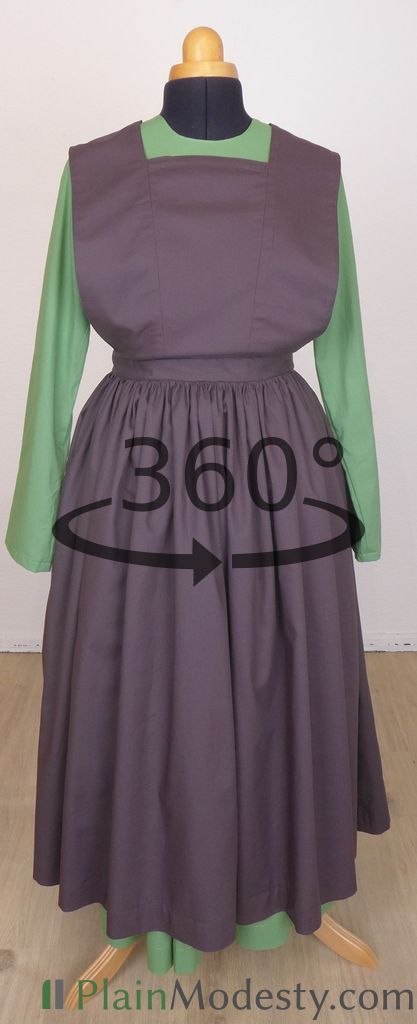Pinafore
Their original purpose was to protect the dress from getting dirty. For many centuries aprons and pinafores were integral parts of a working-class woman's everyday clothing. Over time, they changed from being a protective-only garment, to a decorative one. The apron became part of the traditional folk costumes of almost all regions of western cultures.
A pinafore worn over any regular dress make the outfit appear peasant or Amish. Some garments, like the cape dress or detachable cape, have been added the appearance of a pinafore into themselves.
While aprons have no bib, or just a small one, pinafores have a complete front shaped over the shoulder. Of the many different styles and types, the images below show the main variants of aprons and pinafores.
Originating as practical protective garments, traditional pinafores used to be very simple and functional, to ease affordability, maintenance and washing. They typically feature a sleeveless and collarless design, making them ideal for layering over dresses.
Due to the intended simplicity of pinafores, their patterns are simple as well and usually easy to sew. They consist of the front half of a skirt, with a bib added. For a pinafore style, the cape pattern of the cape dress pattern can be used instead of a bib. The concrete design is open to your preferred style.
Interactive around view

Right now there is no ready-made pattern for pinafores available. Pieces from the dress patterns can be reused for that, like described above. In case there is a lot of interest for patterns of a specific type, I may provide patterns and sewing instructions at some point.
Write a comment:
info@PlainModesty.com



